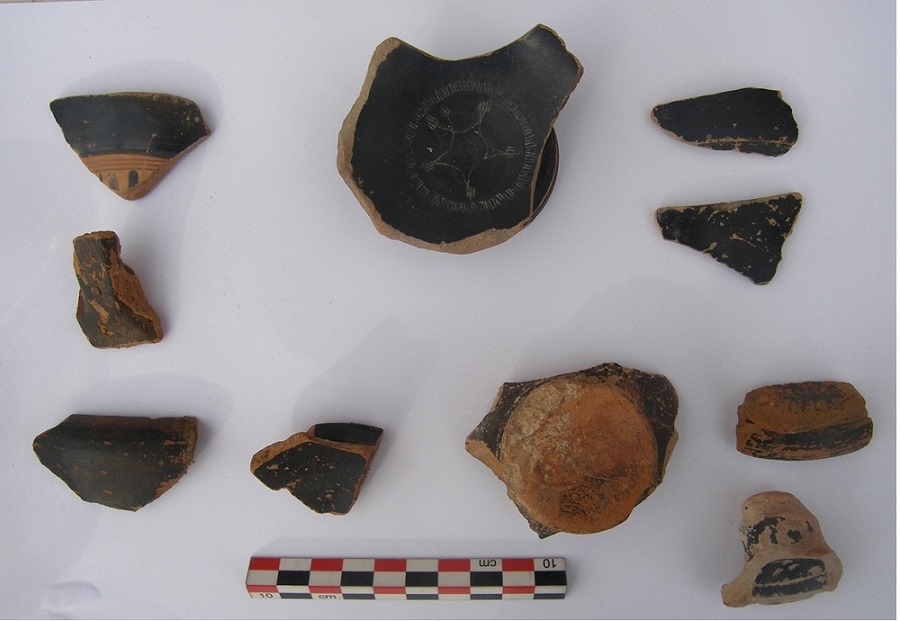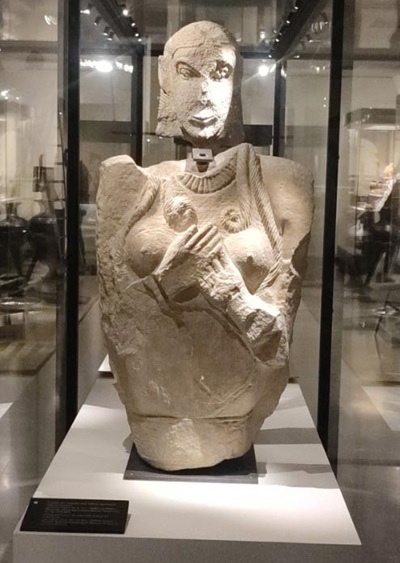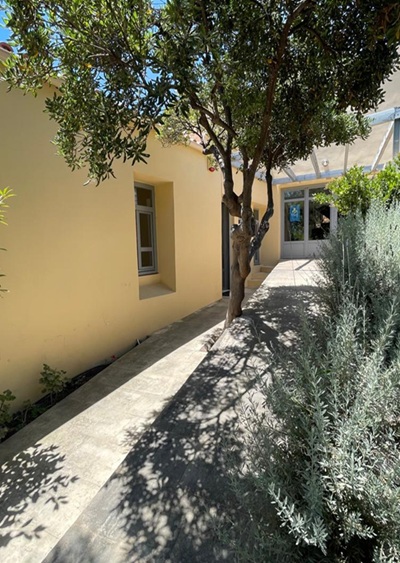
For the sixth year, in the context of a new three-year programme (2020-2022), the underwater research on the eastern coast of Salaminos continued, with the collaboration of the Institute of Underwater Archaeological Research (INAE) and the Ephorate of Underwater Antiquities (E.E.A.) of the Ministry of Culture and Environment, under the direction of Dr. Simossi, Head of the EDF of Evia, and Yiannos G. This is the first interdisciplinary underwater research, which has been systematically carried out since 2016 by Greek institutions in sites of the historic Strait, in the sea area of Ambelaki-Kynosoura.
The underwater survey, in its first phase, was carried out on the northern side of the cove of the present-day Bay of Ambelaki, where the remains of the ancient city of Salaminos, which extends on the southern slope of the Pounda peninsula, have been systematically surveyed since 2016.
In particular, the excavation of a large, partially submerged, section of the sea wall of the Classical city, facing north-south, continued, was carried out, again successfully, by applying an “amphibious” excavation procedure, which combines the means and techniques of land and underwater archaeology, with the installation of a flexible sluice gate and the use of 3 water pumps for the daily dewatering of a sea field of a total area of 140 m2.
As the excavation progressed, over an area of about 50 m2 , the investigated section of the wall, although broken up in places, was further traced to the S. over a length of about 16 m. It was confirmed that two construction phases were represented in the structure, within the 4th century BC, with a final thickness of 3 m, while the constant use of cobblestones and other large dressed stones was documented on the two fronts of the wall, the eastern and the western (inner): the western one was the foundation for the construction (with ancient building material), in Revolutionary or Pre-Revolutionary times, of the existing long pier, which today projects on the sea surface.
It is noted that the excavated (in 2020-2021) part of the wall, on the north-south axis, whose total length is estimated to be at least 57 m, is, so far, the only systematically excavated part of the fortification of the ancient city.
The last excavation produced a significant quantity of accumulated mixed pottery (pottery sherds and horns) of the historical, mainly Hellenistic-Roman, but also posterior periods, while Attic pottery of the Late Classic period was also recorded at the foundation level of the wall. Clay amphorae stoppers and a few fragments of marble objects were also found.
In general, based on the results of the investigations of the five-year period 2016-2021, the course of the sea wall has now been definitively identified, despite the harbour of the Classical-Hellenistic city of Salaminos. It constitutes a very important part of the entire fortification system of the ancient city, whose perimeter can now be reconstructed almost completely, based on the observations of 19th century researchers (W. M. Leake, H. G. Lolling, A. Milchhöfer), in a then unstructured landscape, and the evidence from earlier small-scale onshore excavations by Antonios Keramopoulos and Dr. Iphigenia Dekoulakou.
The underwater survey, during its second phase, was carried out in the inner bay of Abelaki, the anchorage of a large part of the Greek fleet on the eve of the naval battle of 480 BC, using a floating platform designed and constructed by G. Arvanitis and N. Golfis.
Trial excavation cuts were made at three points of interest (Targets 1, 2, 3), of the many that have been identified by the intensive geophysical research of previous years by the University of Patras, under Professor G. Papatheodorou.
Material of archaeological interest came only from the cut at Target 3, on the north-western side of the present-day bay. In this section, down to a depth of about 1 m, a dense accumulation of stones mixed with fragments of pottery and horns of various periods (including Hellenistic amphorae) was found. This is probably drifted mixed material, very similar to that from the adjacent excavation of the wall and other submerged remains, which appears to be associated with land-based activities in Antiquity.
.
The research team included: Giannos G. Lolos and Angeliki G. Simosi (research) Christina Marampea (Dr. Archaeologist, responsible for fieldwork and documentation), Efi Ustambasidou (Archaeologist) and Anna Notia (Teacher), key collaborators, Evangelos S. Kroustalis (Dr. Archaeologist, responsible for photogrammetric imaging), Christos Agouridis (Archaeologist M.A.). ), Paraskevi Takorou (Archaeologist), Nikolaos Golfis (Technical Officer), Petros Tsambourakis, Nikolaos Tzanoudakis and Konstantinos Kirsanof (Divers), Chrysa Fouseki (Head of the Department of Conservation E. E.E.A.) and Irini Malliou (E.E.A. Conservator), Spyros Ayazi and Bilbil Mustafa (Workers), Konstantinos Tsitlakidis (Night watchman of the research area).
The team expresses its thanks to the sponsors-supporters of the survey: Michalis and Myrto Patera, Metochion of the Holy Episcopal Monastery of Agia Skepi Keratea (Fr. Athanasios and N. Sardelis), Consortium of Salaminos Passenger-Carriers (I. Vassiliadis), S. Fouriki-D. Stanota, G. Arvanitis, El. and A. Bekri, A. Koutsiari, K. Katsigiannis, I. H. Fragopoulos, D. Kubloudelis, X. Argyriou (D. Frattis-D. Kotselis), N. Tzanoudakis, G. Valvi, I. P. Theodoropoulos, Christodoulou Bros. G. Panagopoulos.







Leave A Comment